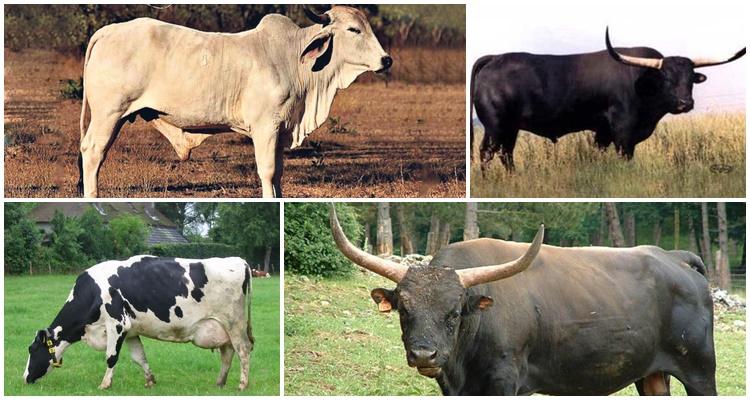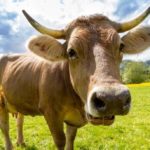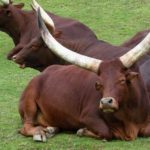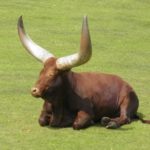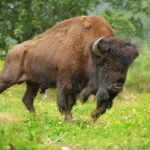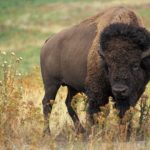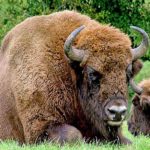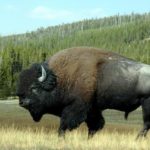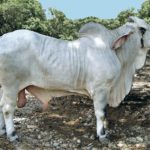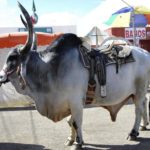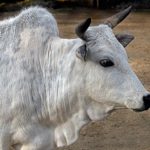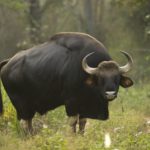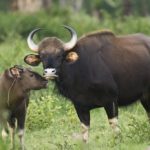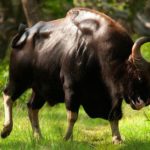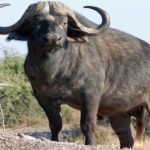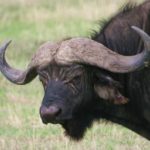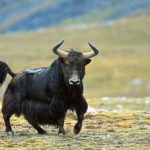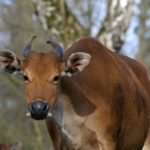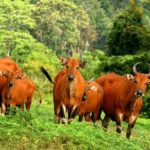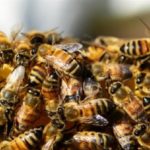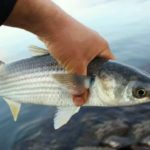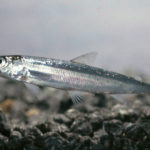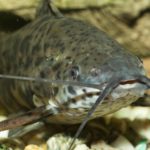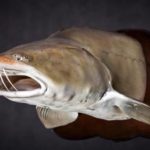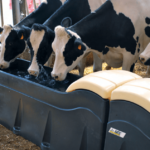Wild cows appeared many years ago. They represent the ancestors of modern animals and at the same time differ in certain features. Modern cows owe their origin to aurochs, who lived a very long time ago. But, as people interfered with their habitat, the population began to decline rapidly. Today they are already extinct. Modern animals have adopted a number of characteristics from these individuals.
General information
Modern cows are female wild bulls. In general, cattle are divided into 2 large genera - buffaloes and bovines. It is noteworthy that when crossing them it will not be possible to obtain offspring. Bull-shaped animals are divided into 4 varieties:
- tur - all cattle descended from him;
- gayal, gaur, banteng - cattle living in southern Asia;
- yak – native to central Asia;
- buffalo.
According to historical information, aurochs lived in Central Asia until the beginning of the seventeenth century, while in Africa they disappeared much earlier.
Today cows are divided into the following types:
- Dairy - they are grown to produce milk. Due to their thin build, the animals are not profitable to breed for beef. That is why such individuals are not eaten. The advantage of animals of this direction is considered to be a calm and balanced character.
- Meat ones are distinguished by their large dimensions. Due to the rapid growth of muscle mass, animals produce a lot of high-quality meat.
- Combined - considered universal. They are able to combine the qualities of 2 directions.
Description of wild cows
Wild cows come in many varieties. Each of them has certain features.
Tour
All types of cows owe their origin to turam - wild bulls. They lived long enough. As humans intervened in their environment, the population decreased significantly. The last individual was identified in 1627. After which the animals died out. It is worth noting that the last individuals died due to diseases associated with weakened immunity.
Turs were considered the largest ungulates. According to research, they reached 2 meters in height and 800 kilograms in weight. The aurochs were characterized by a muscular body and large, sharp horns up to 1 meter in size. There was a hump on the shoulders. The animals are characterized by a dark brown color. Turs lived in the steppe in herds. They were led by females. The animals were distinguished by a calm disposition, but at the same time they could show aggression.They could defeat any predatory animal.
Buffalo
The animal is characterized by its large size and impressive appearance. The bison reaches a length of up to 3 meters. At the withers the height is 2 meters. The animal is characterized by a large head. There are short horns on it, diverging in different directions. Moreover, their ends are bent inward. Animals have a short and powerful neck. In this case, there is a hump on the back of the neck. Males weigh approximately 1.2 tons, and females are smaller - 700 kilograms.
The animals are characterized by strong, squat legs. They have a short ponytail, which is decorated with a tassel at the end. Bison have good hearing and sense of smell. The body is covered with gray fur.
These individuals come from southern Europe. Subsequently, they entered Eurasia and were introduced to North America. The first animals were twice the size of modern representatives. They live in large herds that include up to 20,000 bison.
Adult males are considered the leaders of the herd. In the wild, bison live 20 years. There are forest and steppe species. To expand their habitat, bison were settled in North America. They are now found in northwestern Canada. They also live in British Columbia.
Bison
This bull-like animal represents the largest representative of modern European fauna. Adult animals reach 2.3-3.5 meters in length. The height at the withers reaches 2 meters. The length of the skull reaches 50 centimeters. Animals are distinguished by a short and thick neck. The live weight of individuals is 1 ton.
Bison are considered descendants of a primitive animal - bison priscus, living in Eurasia. Initially they lived over vast territories. Individuals were found on the Iberian Peninsula, Western Siberia, and Scandinavian countries. Bison also live in England.
Today in Europe there are only 2 main species left - the European lowland and the Caucasian. They live in broad-leaved, deciduous or mixed forests. Bison are also found in meadows. In addition to grass, animals require wood. They eat fragments of many trees - aspen, hornbeam, willow. At the same time, bison can consume different parts of plants - thin twigs, foliage, bark.
Zebu
This term refers to the Asian cow, which is suitable for hot and humid climates. The animals originally come from South Asia. They come in big sizes. The average height is 1.5 meters, and body length is 1.6. Zebu have an elongated head and neck. There is a pronounced fold under the neck, and a large hump is located on the back of the neck.
The head has an elongated shape and a convex forehead. Bulls weigh 900 kilograms, and cows - about 600. The animals are distinguished by their high legs. Thanks to this, they can actively move. They are characterized by thick skin, which is covered with sparse hairs. The color is white. Light brown color is also found.
Zebu eat grass and leaves. They can also consume thin twigs. To find food, zebu are able to move impressive distances. They live in the subtropics and tropics. In addition to India, individuals live in Asia and Africa. They are also found in Korea and Japan. Zebu also live in the USA, Madagascar, and Brazil.
Gaur
The bull with this name is considered the largest.It is still found in the wild. The body size of this animal is surprising. Its height reaches 3 meters, and its weight is 1600 kilograms. Sometimes such individuals are even called Indian bison.
Despite their large size, gaurs have a calm disposition. Animals are considered fearless, so even tigers are wary of them. The wool of bulls is distinguished by a dark brown tint. It is short and shiny. The horns reach 90 centimeters. They are located vertically and look like a crescent.
The largest population of animals is present in India. A domesticated variety of gaur called gayal was also developed in this country. Such individuals are characterized by smaller sizes and are often used on the farm.
Buffalo
Such bulls are often found in the southern regions. Their population is still preserved in nature, but it is gradually decreasing. There are 2 types of individuals - Asian and African. The second variety is characterized by large sizes. Their body is covered with black fur. It can also be dark brown. The animals reach 1.6 meters in height and weigh 1 ton. African buffalos live near water sources. They are distinguished by a pronounced herd instinct. This is due to the need for protection from natural enemies. These include lions and crocodiles.
Indian buffaloes have many subspecies. Large representatives reach 2 meters. Small wild bulls are called anoas. They reach a height of 80 centimeters. Moreover, their weight is 300 kilograms.
Although these animals are listed in the Red Book, they continue to be hunted. This is due to the popularity of the skin among tourists visiting Asia.
The population of large Asian bulls in nature is constantly decreasing. This is due to the invasion of people into their habitat.Many individuals have been successfully domesticated. The calm nature, excellent productivity and unpretentiousness make it possible to cross buffaloes with domestic bulls.
Yak
Yaks are originally from Tibet. They are pack animals that live in nature in small herds or alone. Life expectancy reaches several decades.
Yaks are characterized by a number of features. The length of the male’s body is 4.3 meters, the female’s is no more than 3. At the same time, the tail grows up to 1 meter. Animals are characterized by a low head position. The presence of a hump makes the back sloping. At the withers they reach a height of 2 meters. The weight is 1 ton.
There are long horns on the head. They are widely spaced. The length of the horns reaches 95 centimeters. They have a curved shape and diverge in different directions. The coat is grey-black in color. It can also be dark brown. The coat is long and shaggy. It completely covers the limbs.
Today, yaks live not only in the mountains of Tibet. They live in other regions as well. Animals easily tolerate frosts. Their long hair allows them to withstand temperatures down to -35 degrees.
Yaks live in the mountains of Pakistan and Afghanistan. They are bred on Iranian, Chinese, and Mongolian farms. Also, single specimens are found in Buryatia and Altai. At the same time, human intervention in animal habitats leads to a significant reduction in their population. That’s why today yaks are listed in the Red Book. It is worth considering that the yak is a dangerous animal that is capable of entering into a duel with a person at any time.
Banteng
This type of bull is rare. They live in southeast Asia. Several hundred years ago, bantengs were domesticated.They eventually found their way to Australia, which led to the emergence of another population there.
Bulls are characterized by short hair, which has a smooth texture. Males differ from females in size and color. The body of males is covered with dark fur. Females are characterized by a light brown or red color. There are many varieties of wild cows. They differ in certain features. Many of these species are considered rare and are therefore listed in the Red Book.

